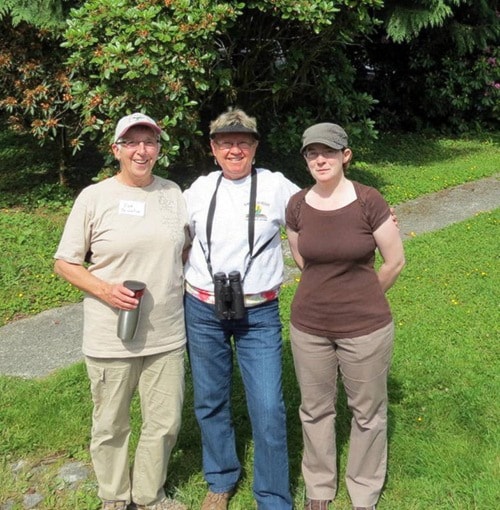Three Vermilion Forks Field Naturalist members recently attended the Rocky Point Bird Observatory Hummingbird meeting in Burnaby, BC. The meeting was held at Simon Fraser University June 15, 2013 and at the Widgeon Marsh in Coquitlam on June 16. The members were Sue Elwell, Amanda Lahaie and Terry Tellier. All three have permits from the Canadian Wildlife Service of Canada to band hummingbirds.
Researcher Dr. Doug Altshuler from UBC was the guest speaker. He explained the aerodynamics of “Hummingbird Flight” discovered in his groundbreaking experiments.
The Princeton team was honoured to be asked to present their banding techniques to the conference. As well as getting the chance to liaise with other banders and experts throughout BC they had a hands-on session at Widgeon Marsh.
Banding by the Princeton group has verified that we now have four species of hummingbirds nesting in the area. They are Rufous, Calliope, Black-chinned and now Anna’s. Recently the team captured a bird which had been banded a little more than two weeks earlier in southeastern Arizona. This is only the second Arizona bird captured in BC.
Data gleaned from banding the birds is used to determine migration routes, site dedication, population (sex, age, health), times they arrive, leave and breed, habitat requirements and pollination role. From this information we have learned about their primary threats which are global climate change, habitat destruction and invasive species.
The Hummingbird Banding Team includes VFFN volunteers as well as generous homeowners who provide banding locations. The banders thank all our volunteers plus give special thanks and appreciation to the VFFN club for their ongoing support of the project.
